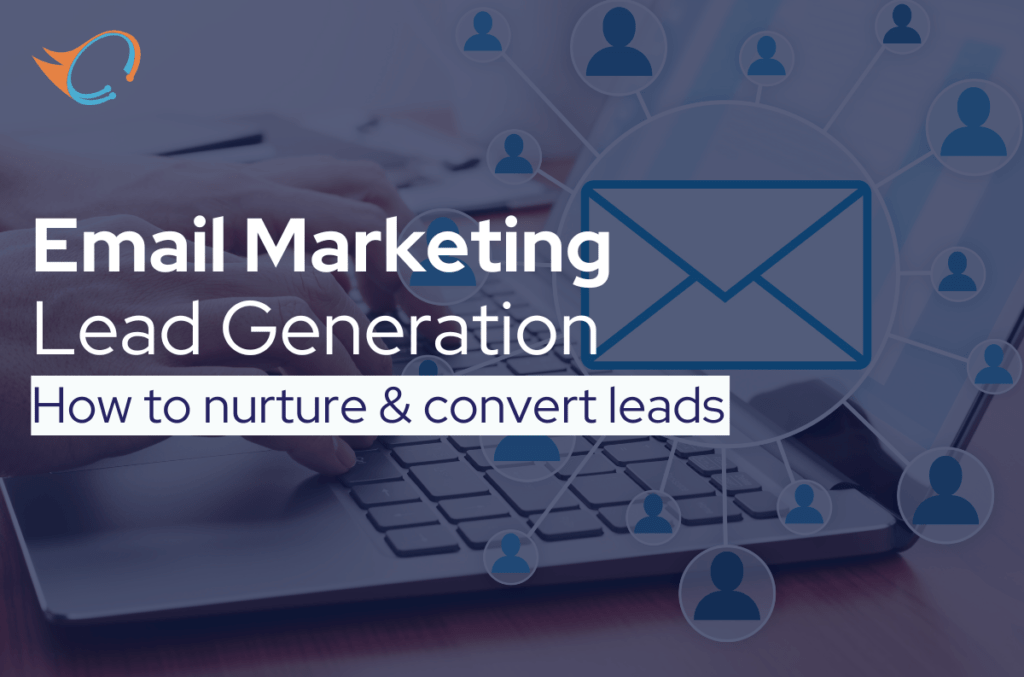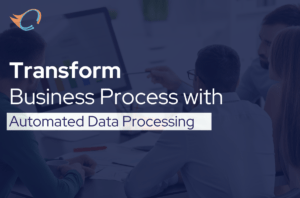
In today’s digital landscape, email marketing stands as a cornerstone in the realm of lead generation, offering unparalleled opportunities to connect with potential customers. This strategy transcends mere communication, evolving into a powerful tool to nurture leads and significantly enhance conversion rates. By leveraging targeted and personalized content, businesses can foster a sense of trust and relevance among their audience, guiding them smoothly along the buyer’s journey. Effective email marketing strategies not only ensure sustained engagement but also pave the way for converting prospects into loyal customers. The key lies in understanding the unique needs and preferences of your audience, allowing for the delivery of tailored messages that resonate and drive action. As we delve deeper into the nuances of email marketing for lead generation, it becomes evident that its impact on a business’s growth and success is profound and multifaceted. Embracing these strategies can transform your marketing efforts, turning leads into valuable assets for your brand.
Understanding Email Marketing Lead Generation
Email marketing lead generation is a pivotal component of digital marketing strategies, serving as a dynamic method to attract and engage potential customers. This approach involves collecting prospects’ contact information with the intent to cultivate a relationship through targeted email communications. The essence of email marketing in the digital realm is its ability to personalize interactions and deliver value directly to the inbox of potential leads. By offering relevant content, businesses can not only attract leads but also keep them engaged, gradually guiding them through the sales funnel.
The significance of email marketing in digital marketing cannot be overstated. It allows for direct communication with a curated audience, enabling brands to build rapport, educate, and persuade prospects with tailored messages. This personalized engagement is key to converting interested individuals into loyal customers. Through strategic segmentation and compelling content, email marketing becomes a powerful tool in a marketer’s arsenal, driving lead generation by attracting and engaging potential customers effectively. Integrating email marketing into your digital strategy ensures a continuous flow of leads and fosters a nurturing environment that is conducive to business growth.
Building Your Email List the Right Way
Building a robust email list is a critical step in harnessing the full potential of email marketing lead generation. The emphasis should always be on quality over quantity, ensuring that your list comprises individuals genuinely interested in your offerings. This approach not only enhances engagement rates but also drives better conversion outcomes. To attract such high-quality leads, compelling opt-in offers are essential. These offers, whether they be exclusive content, discounts, or early access to new products, must provide tangible value to encourage sign-ups. Crafting these offers requires a deep understanding of your target audience’s needs and preferences, enabling you to design incentives that resonate deeply and prompt action. Implementing effective strategies for list building, including the use of targeted landing pages and strategically placed sign-up forms across your digital platforms, can significantly amplify your lead generation efforts. By focusing on creating value-driven opt-in offers, you can effectively grow your email list with engaged subscribers eager to hear from you, setting the stage for successful email marketing campaigns.
Crafting Compelling Email Content
Crafting compelling email content is pivotal in the success of email marketing lead generation. The essence of this strategy lies in delivering valuable and relevant content that resonates with your audience, ensuring that every message sent not only captures attention but also fosters a deeper connection. Personalization plays a crucial role in this endeavor, transforming generic communications into tailored messages that speak directly to the individual needs and interests of each recipient. By leveraging data insights to customize content, marketers can significantly increase engagement rates, enhancing the effectiveness of lead nurturing efforts. This approach not only elevates the user experience but also strengthens the relationship between brand and customer, paving the way for higher conversion rates. In essence, the art of crafting compelling email content, enriched with personalization, is a testament to the power of thoughtful communication in building lasting connections and driving meaningful actions.
Segmenting Your Email List for Better Targeting
Segmenting your email list is a strategic approach that significantly enhances the effectiveness of email marketing campaigns by ensuring messages are tailored to the specific needs and interests of different audience segments. This method involves dividing your email list into smaller groups based on criteria such as lead behavior, demographic information, purchase history, and engagement levels. The benefits of this segmentation are manifold, leading to more personalized and relevant communications that resonate with recipients, thereby increasing open rates, click-through rates, and overall engagement.
For instance, segmentation strategies can include categorizing leads by their stage in the buying cycle, such as new subscribers, engaged non-buyers, and loyal customers. Each group receives content that is relevant to their current relationship with your brand, from welcome emails that introduce new subscribers to your value proposition, to targeted offers designed to re-engage dormant leads, or loyalty rewards aimed at retaining existing customers.
By implementing these segmentation strategies, businesses can significantly improve lead nurturing efforts. Tailored messages ensure that leads receive content that is not only of interest but also timely and pertinent to their interactions with your brand. This targeted approach fosters a deeper connection and understanding between the business and its potential customers, ultimately guiding leads more effectively through the sales funnel towards conversion.
Automating Your Email Marketing for Efficiency
The core benefit of email marketing automation lies in its ability to deliver personalized messages to leads at critical stages of their journey. For example, welcome emails can be automatically sent to new subscribers, followed by a series of educational content that builds brand credibility. As leads interact with these emails, further automation can trigger targeted offers or information based on their actions, such as opening an email or clicking on a link.
Setting up these automated workflows involves identifying key touchpoints within the customer journey where automated emails can have the most impact. This might include initial sign-up, after making a purchase, or when a lead has shown interest in a specific product or service. By leveraging segmentation and personalization within these workflows, businesses can create a more engaging and tailored experience for each lead.
Ultimately, email marketing automation not only saves time and resources but also significantly enhances the lead nurturing process. It ensures that leads receive the right message at the right time, moving them closer to conversion with each interaction.
Measuring and Analyzing Your Email Marketing Success
Measuring and analyzing the success of your email marketing campaigns is crucial for optimizing your lead generation and conversion strategies. By tracking key metrics, marketers can gain insights into the effectiveness of their efforts and identify areas for improvement. Essential metrics include open rates, click-through rates (CTR), conversion rates, bounce rates, and email list growth rate. These indicators help assess how engaging your content is, how well it drives action, and the overall health of your email list.
Open rates reveal how compelling your subject lines are, enticing recipients to open the email. CTRs indicate the effectiveness of the content and calls-to-action (CTAs) within the email, showing how many recipients were motivated to click on links. Conversion rates measure the ultimate success of each campaign in prompting recipients to take a desired action, such as making a purchase or signing up for a webinar. Bounce rates and list growth rate, on the other hand, provide insights into the quality of your email list and the effectiveness of your list-building strategies.
To refine your email marketing strategies, it’s essential to analyze these metrics in the context of each campaign’s goals. A/B testing can be particularly effective, allowing you to compare different elements of your emails (such as subject lines, content, and CTAs) to see what works best. By continually monitoring these metrics and adjusting your strategies based on data-driven insights, you can enhance the relevance and effectiveness of your campaigns, leading to improved lead generation and higher conversion rates.
Integrating email marketing into your lead generation strategy
In conclusion, integrating email marketing into your lead generation strategy is not just beneficial; it’s essential for nurturing leads and enhancing conversion rates in today’s digital marketing landscape. The personalized, targeted approach that email marketing facilitates allows businesses to communicate directly with potential customers, providing valuable content that guides them through the buyer’s journey. From building a quality email list and crafting compelling content to segmenting your audience for better targeting and automating your marketing efforts for efficiency, each step in the email marketing process plays a crucial role in converting leads into loyal customers.
However, the work doesn’t stop with the implementation of these strategies. The digital marketplace is ever-evolving, and so are the preferences and behaviors of consumers. Therefore, it’s imperative for businesses to continuously monitor, analyze, and refine their email marketing tactics. By staying attuned to the effectiveness of your campaigns through key metrics and being willing to adapt your strategies based on those insights, you can ensure that your email marketing efforts remain effective and continue to drive significant results.
Embrace the power of email marketing as a cornerstone of your digital marketing strategy, and commit to its ongoing optimization. With dedication to crafting personalized, engaging content and a willingness to adapt to the changing digital environment, your business can achieve remarkable success in nurturing leads and boosting conversion rates.



